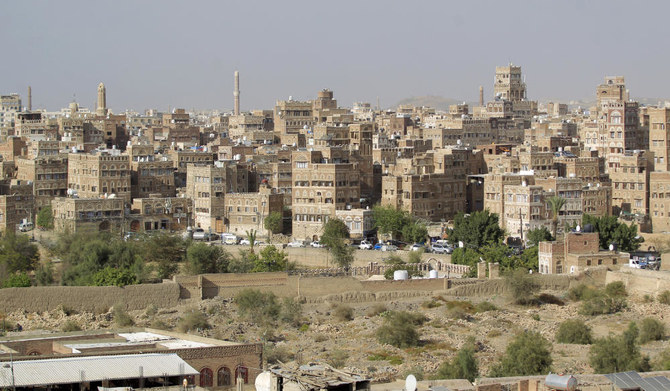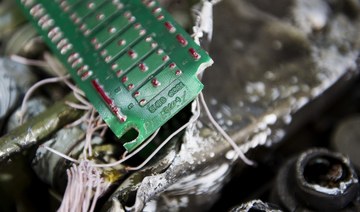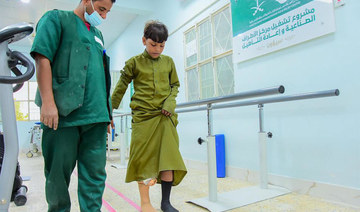AL-MUKALLA: Yemen’s Houthi militia aims to destroy ancient marketplaces and buildings in UNESCO World Heritage-listed Old Sanaa to construct a religious shrine, officials have claimed.
The urgent warning from the Yemeni government and local residents and shopkeepers came after a leaked video showed a meeting of Houthi officials exhibiting a new 3-D film of a massive facade with a religious shrine named after Imam Ali ibn Abi Talib, the Prophet Muhammad’s son-in-law and cousin, that would be constructed on top of hundreds of stores and buildings in Old Sanaa.
The Houthi project would demolish at least three historic landmarks in Old Sanaa, including Al-Mahdada, Al-Halaqa, and Al-Manqala, as well as scores of homes and businesses.
Yemenis, outraged by the film, asked that the international community and UN heritage authorities, particularly UNESCO, intervene to prevent the Houthis from carrying out their plan.
Muammar Al-Eryani, Yemen’s minister of information, culture, and tourism, pointed out that if the Houthis went ahead with the project, hundreds of old houses and locations in Sanaa dating back to ancient times would be destroyed, adding that the Houthis had previously ignored calls not to demolish a millennia-old mosque in Sanaa.
In a tweet, he said: “The Houthi militia has previously demolished the historic Al-Nahrain Mosque and leveled it to the ground and tampered with its building materials and priceless stones.
“We warn against the terrorist Houthi militia demolishing of Al-Mahdada, Al-Halaqa, and Al-Manqala markets, which include hundreds of antique shops in the old city of Sanaa.”
Mohammed Jumeh, Yemen’s permanent representative to UNESCO, said that the government wrote to UNESCO informing the organization about the Houthi plan and its impact on the nature of Sanaa as a world heritage site, and warning that if the plan went ahead, Old Sanaa would be delisted from the UNESCO list.
Jumeh said that the Houthis would transform the city’s character by replacing old construction material of damaged stores and residences with new, removing an element that retained Sanaa as an ancient city.
“The problem is that they are introducing a new hue to the Yemeni architecture, which is a contemporary color that contradicts the historical nature of Sanaa,” Jumeh told national TV, adding that the architecture of the Houthis’ holy site would be modeled on the style of religious locations in Iran rather than Sanaa’s old architectural style.
“On the other hand, this contemporary structure does not originate from the Yemeni cultural setting; rather, it is intended to be based on the Iranian cultural environment and the Persian architectural style.”
Yemeni government officials, conservationists, and archaeologists hope that extensive media coverage of the Houthi proposals and international pressure from global heritage organizations would compel the Houthis to abandon the idea.
Jumeh said: “I think international pressure from UNESCO and other international organizations to halt aid to Sanaa could have an influence.”
In Sanaa, the proprietors of several of the targeted antique marketplaces said they had been pushed by the Houthis into selling their stores.
In a tweet, Abdul Wahab Qatran, a Sanaa-based legal activist, said he visited Old Sanaa and met shop owners who said the Houthis attempted to force them to surrender their businesses in order to construct a holy site and endowments for Imam Ali.
“We are in the presence of lunatics who earlier destroyed Al-Nahrain Mosque, which is over 1,400 years old. And now they want to demolish the marketplaces of the world’s most significant and oldest city,” Qatran added.
One shopkeeper agreed to sell his store for a “reasonable amount,” while another refused to sell even if it cost him his life, Qatran said.
Despite an outcry from Sanaa residents and other Yemenis, the Houthis have made no comment.


























